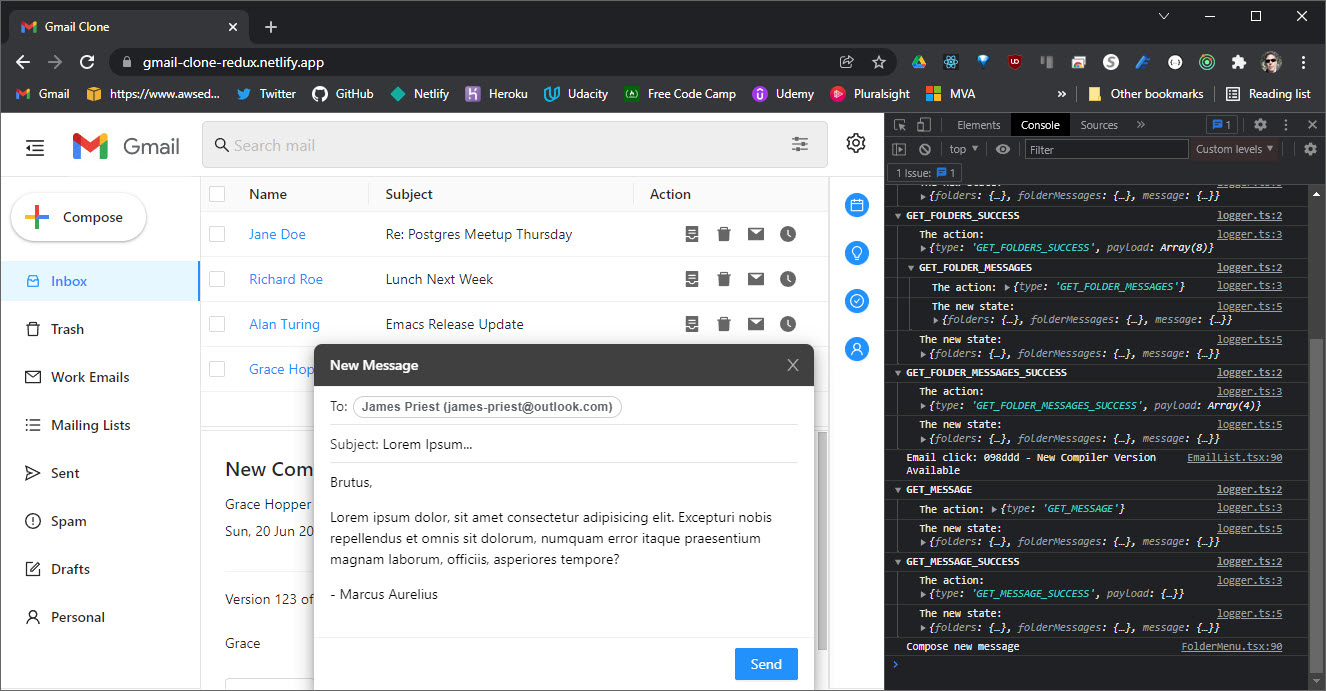Live Demo: https://gmail-clone-redux.netlify.app
This is a mock-up of the Gmail frontend. It was given as a coding exercise under a limited amount of time. The assignment was to create a frontend from scratch and populate it with data from a supplied set of JSON files.
The project has the following features:
- Mock up fetch and API endpoints using Promises and async/await.
- Use of Typescript and Create-React-App for build environment.
- Use of Ant Design component library.
- Use of Redux for global state management.
- Use of Redux Thunk for Async API calls.
Clone the repository.
git clone https://github.com/james-priest/gmail-clone.git
cd gmail-cloneUse yarn or npm to install dependencies.
yarn
# or
npm install- Starts a dev server.
- Bundles but does not optimize or minify.
- Launches website at http://localhost:3000/.
yarn start
# or
npm run start- Will build once (No watch mode or hot module replacement).
- Minifies html, js, css, and optimizes image resources.
- Outputs to
build/.
yarn build
# or
npm run buildIn order to view the production version a local http server needs to be used to launch dist/index.html .
Here are two links showing how to spin up a local http server.
- Simple HTTP Server - Runs on Node.js.
- How to run things locally - Instructions for Node.js, Python, & Ruby.
Alternatively, a Visual Studio Code extension can be used to run the site from within the VSCode dev environment.
- Live Server - Launch a development local Server with live reload feature for static & dynamic pages.
I divided my time into 3 phases:
- Research
- Evaluate frameworks and component libraries for best fit.
- Decide which features to include in the UI.
- Determine which state management option to use (e.g. component state, context, redux, etc.).
- Planning
- Mockup the page view.
- Split view up into hierarchy of components.
- Determine application events.
- Determine what data should live in the store.
- Coding
- Code mock-up of fetch and data access endpoints.
- Code UI, components, and component interactions.
- Code state management.
